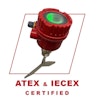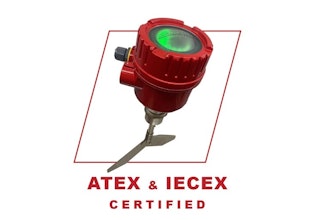 Like many other industries, the food manufacturing sector is adopting more technology each year with an eye toward increasing productivity while adhering to stringent food safety guidelines, especially in the wake of tougher federal regulations.
Like many other industries, the food manufacturing sector is adopting more technology each year with an eye toward increasing productivity while adhering to stringent food safety guidelines, especially in the wake of tougher federal regulations.
While productivity is the end goal for any company in the private sector, the food packaging industry faces unique challenges to meets its objectives. Regulations coming from the U.S. Food and Drug Administration (FDA) and U.S. Department of Agriculture (USDA) and the respective Hazard Analysis and Critical Control Point (HACCP) programs are pushing liability into food processors’ laps.
Food processors invest millions of dollars annually into magnetic separation equipment, proactively reducing the risk that any foreign object or contaminant will be embedded into a food product sold to grocery stores, restaurants, retailers or general consumers.
Attention to product purity on the production line has never been greater, creating the need for food processors to detect and eliminate foreign objects before the end product reaches the consumer. Eliminating contaminant metal also prevents damage to machinery, saving downtime and repair costs.
The use of permanent magnetic separators helps draw out fine tramp metal along critical points of the production line. These separators come in different styles and in various magnetic strengths, depending upon the application. Periodically, they all need to be tested to monitor magnet performance.
Most industrial magnet manufacturers have adopted standard test equipment that measures the holding force of a magnet. Periodic testing of magnets helps determine whether a magnet needs to be repaired, upgraded or replaced. Here are some rules to follow to make sure you are using standard operating procedure when field testing magnetic strength to attain the most accurate results.
Which magnets get tested?
In most cases, smaller permanent magnets should be subjected to semi-annual pull testing to assess magnetic strength. These permanent magnets include:
- Magnetic Plates — Function: Protect against medium and small-size contaminants. They are installed in chutes, spouts, ducts and in suspension over non-magnetic conveyors and screens.
- Magnetic Grates — Function: Remove small and fine tramp iron from dry and free-flowing products. They are designed for steep-sloped hoppers, even with odd and irregular shapes, floor openings, vertical closed chutes and ducts.
- Grates in Housing — Function: Remove ferrous contamination from free-flowing products as it cascades through multiple grate rows within a custom manufactured housing.
- Magnetic Traps — Function: Purify products in liquid and slurry lines by removing small particles of scale, oxides and iron contaminants.
What causes magnet strength to erode over time? Exposure to harsh conditions and extreme temperatures are some culprits. Magnets can also be damaged during routine cleaning if accidentally dropped or knocked against another object. This causes wear and tear on the magnet surface and can drastically alter the holding force. A visual inspection sometimes can spot a weak magnet (metal normally attracted to the magnet is now getting bypassed). However, the more sure fire way to detect problems is via a pull test.
How to conduct a proper pull test
The pull test procedure begins with cleaning the magnet surface. Even a small gap between the pull test piece and magnet will adversely affect test results. Then use the following steps:
- Select the appropriate pull test piece and spacer for the separator--based on guidelines found in your pull test kit--and attach to the scale. Aluminum spacers are available in ¼-inch to 1-inch thickness while test pieces vary from ¼-inch steel sphere attached to a stainless steel bar (good for testing a grate or tube magnet) to a 1 x 3 x 1/8-inch plate (for plate magnets).
- Zero the scale with the appropriate pull test piece by rotating the adjustment knob on top until the scale line measures zero.
- Allow the piece to attract to the magnet and position the scale perpendicular to the magnet surface.
- Pull the scale directly away from the magnet surface slowly, smoothly and evenly. Be careful, as the piece may snap unexpectedly from the magnet surface. Note the measurement by reading the red slider as it slides down the barrel of the scale.
- Repeat the test to verify results.
It is recommended that you record an average of three to four pulls for accuracy. Compare pull test values every six months and look for a downward trend. If the latest pull test values fall below 10 to 20 percent of the original pull test values for any given magnet, the magnet should be reviewed for possible repair or replacement.
Different test pieces can skew results
There are many different magnet manufacturers that offer pull test kits. Even though pull test kits may look similar, the test pieces can vary by design, weight, diameter and composition. Different pull test pieces yield different measurements, which can cause confusion and misleading results.
For example, measuring the same Rare Earth tube magnet using different magnet manufacturers’ ¼-inch diameter test pieces will yield significantly different results.
The reason the small test piece shown on the right in Figure 1 pulls higher values than the test piece shown on the left is that it is an oversized ¼-inch sphere attached to a magnetic stainless steel ring attached to a magnetic scale hook. Since the ring and hook are magnetic and positioned within the tube’s magnetic field, it requires greater pull force than the lone single sphere suspended from the scale. These variations—sometimes difficult to detect—can inflate pull test values by 10 to 12 percent.
Other pull test kits might include only a ½-inch diameter test piece for use on RE tube and grate magnets. This test piece according to standard operating procedure is too large for accurately measuring the pull force on the more sensitive RE magnets.
These variations of test pieces are significant because they allow some magnet manufacturers to claim their RE tube and grate magnets yield a higher pull test value than their competitors. Pull testing is widely used to compare relative strength of a given magnet in any industrial setting, including food manufacturing. The only way to accurately compare the pull strength of competing magnet manufacturers’ magnets is to do a side-by-side comparison using the same test piece.
Pull test results can help determine if (or when) a magnet needs replacing. Magnets with visible cracks or wear holes should be removed from operation immediately, regardless of test results. Magnets showing 15-20 percent erosion in holding force over a six-month to one-year period should also be replaced, particularly if the magnet is located in a Critical Control Point.
Not sure when to replace your magnets? Most magnet suppliers will offer advice on test results and replacement recommendations. Some magnet manufacturers, including Eriez®, will lend assistance with pull test inspections and help with evaluations.
To learn more about pull test comparisons, watch the new Eriez Pull Test Comparison video available at youtube.com/eriez.























